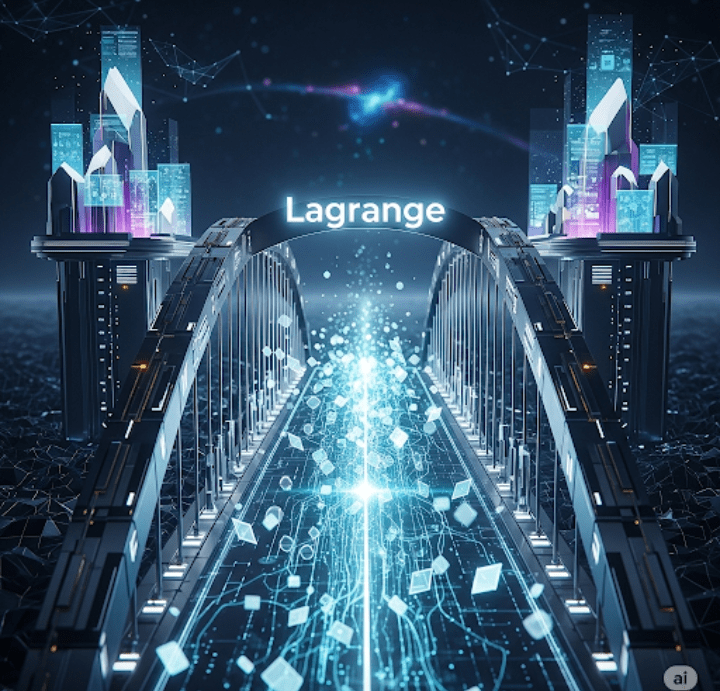Lagrange is not just a protocol, but a fundamental layer of infrastructure that complements existing blockchain networks like Ethereum. Its main goal is to transform complex and costly computations into scalable, efficient, and confidential processes that can be executed off-chain and then quickly and reliably verified on-chain.
This innovation is made possible through the use of zero-knowledge proofs (ZKPs), particularly ZK-SNARKs (Zero-Knowledge Succinct Non-Interactive Arguments of Knowledge).
How does it work? Technology under the hood
Imagine you want to prove that you know the password to a website without revealing the password itself. ZKP makes this possible. The Lagrange technology uses this idea for computations.
Instead of each node in the blockchain performing the same computation (which is inefficient), Lagrange allows:
Offline computations: Perform complex operations on a powerful server outside the blockchain.
Proof generation: Create a small, cryptographically secure ZK-SNARK proof that confirms the computation was performed correctly without revealing the data that was used.
Network verification: Send this proof to the blockchain. The network can verify its validity in seconds, confirming the computation result at minimal cost.
This process is extremely efficient and opens the door to functionalities that were previously impossible due to technical limitations.
New opportunities for developers: from theory to practice
For developers, Lagrange is a new level of freedom for creating applications. Here are a few specific examples:
Private DeFi: Create lending protocols where users can prove their creditworthiness (for example, that their debt does not exceed 50% of their assets) without disclosing their total balance or other transactions.
Confidential voting: Organize secure on-chain voting where participants can confirm their voting rights without revealing who they are voting for.
Scalable games: Create complex gaming mechanics, such as verifying game history or calculating match results, off-chain, significantly reducing fees and speeding up gameplay.
Decentralized Identifiers (DIDs): Develop systems where users can prove their identity or age without revealing their full date of birth or name.
Why Lagrange is an opportunity for investors
Investing in Lagrange is an investment in infrastructure that will support future innovations. Its value for investors is based on several key factors:
Solving fundamental problems: Lagrange addresses the issues that are the biggest barriers to mass blockchain adoption — scalability, speed, and privacy.
Strong team and support: The project is backed by reputable venture funds in the crypto sphere, indicating trust in the technology and its team.
"Agnostic" approach: Lagrange is not tied to a single blockchain. It can work with various networks, including Ethereum, Solana, and others, significantly expanding its potential market and use cases.
Lagrange is not a direct competitor to L1 (e.g., Ethereum) or L2 (e.g., Arbitrum, Optimism), but rather a powerful partner to them. It acts as a "computational" layer that allows these networks to perform more functions at lower costs. This makes it one of the most important building blocks of the new decentralized economy.
